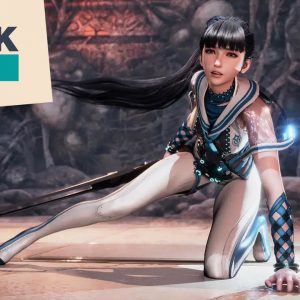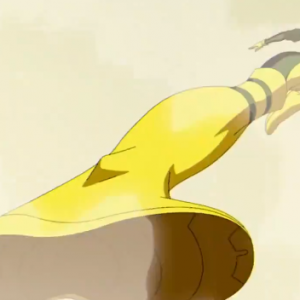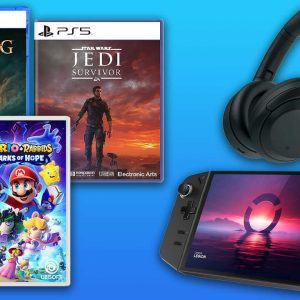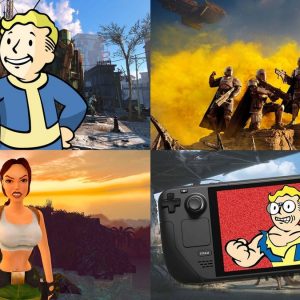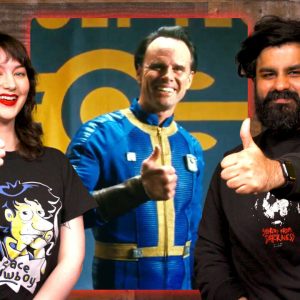The Xbox One stumbled out of the gate when it launched back in 2013. But in the decade since, it’s become a bit easier to appreciate Microsoft’s ambitions and foresight with its third console. It combined a console, streaming device, and Blu-Ray player into the original all-in-one media player. But like Marty McFly rocking out to “Johnny B Goode” in Back to the Future, people weren’t quite ready for that. Yet.
The console wars as we know them today didn’t fully take shape until Microsoft joined the fray. The computing powerhouse had made games ever since 1979’s Microsoft Adventure, but first took the plunge into the console market in 2001 with the original Xbox, which boasted groundbreaking first-party games like Halo and Jade Empire. Team Green also brought online play (and trash-talking) to the masses—even if Sega’s Dreamcast technically got there first.
Its follow-up, the Xbox 360, defined a generation of gamers, selling 84 million units and seeing the launch of iconic titles like Red Dead Redemption, Grand Theft Auto V, and Halo 3. But by the time the 2010s rolled around, the 360 was starting to lose its luster, and the widespread hardware failures known as the “Red Ring of Death” were turning a lot of consoles into overpriced paperweights. Microsoft found itself in the challenging position of improving upon a huge success while also winning back the trust of wary players.
Microsoft’s follow-up was the Xbox One, the always-online console bundled with the much-maligned motion control accessory known as the Kinect. To be blunt, the console’s introduction was a bit of a clusterfuck. Originally hinted by games press as the “Xbox 720,” the console got its full reveal in May 2013 at Microsoft’s headquarters in Redmond, Washington. The event spent most of its run time hyping up the Xbox One’s capabilities as an all-in-one media box and its integration with television, in addition to being a gaming console. Though that’s considered the norm today, it proved alienating to Xbox’s dedicated “hardcore” playerbase.
It didn’t help that the console needed to always have an internet connection and a Kinect just to work at all, though Microsoft walked back that latter requirement before release. Nor did it help that it was priced aggressively, at $100 more than Sony’s PlayStation 4. As a result, the Xbox One failed to perform as well as its predecessor, selling only 58 million units.
As Kotaku’s Luke Plunkett put it at the time, “What could/should have been a triumphant exclamation point, the day the next-gen console wars began in earnest, instead turned into a disaster I don’t think any of us saw coming.”
Once gamers actually got their hands on the Xbox One in November 2013, they were pretty happy with the results. Outlets gave the console high scores, with Polygon noting in its review that “the Xbox One still manages a genuine sense of wonder, all without losing sight of the strong gaming foundation the Xbox was built on.”
The hardware might have been solid, but the Xbox One sorely lacked in exclusive games at launch. There was hack-and-slasher Ryse: Son of Rome and dragon-riding simulator Crimson Dragon, which drew mixed reviews due to its then-unusual use of microtransactions.
The PlayStation 4 debuted around the same time with a similarly lackluster library, but over time built up an arsenal of truly amazing titles like God of War, Uncharted 4, and Horizon Zero Dawn. The Xbox One never really caught up. (I might have skipped the Xbox One generation entirely if I hadn’t won a console at a Doritos event with Joel McHale in Central Park.)
Eventually, Microsoft started to release upgrades to the console with the One S and One X models, not to be confused with the modern Series X|S. They were a bit more beefed up, allowing devs to release more visually demanding games like Sea of Thieves and Red Dead Redemption 2, but the damage was done. The latter half of the Xbox One era also saw the launch of Game Pass, which would become a cornerstone of Microsoft’s gaming efforts in the years ahead.
Microsoft is still playing catch-up with Sony when it comes to first-party exclusives. But the concept of an “everything platform” is very much alive and well in the Series X|S era. You can see it in Game Pass, Microsoft’s push into Cloud technology, and the idea of Xbox as more of an “ecosystem” than a box under your TV. The gamers of 2013 may not have been ready for that yet, as Marty McFly would say, but it seems like the kids are loving it.

